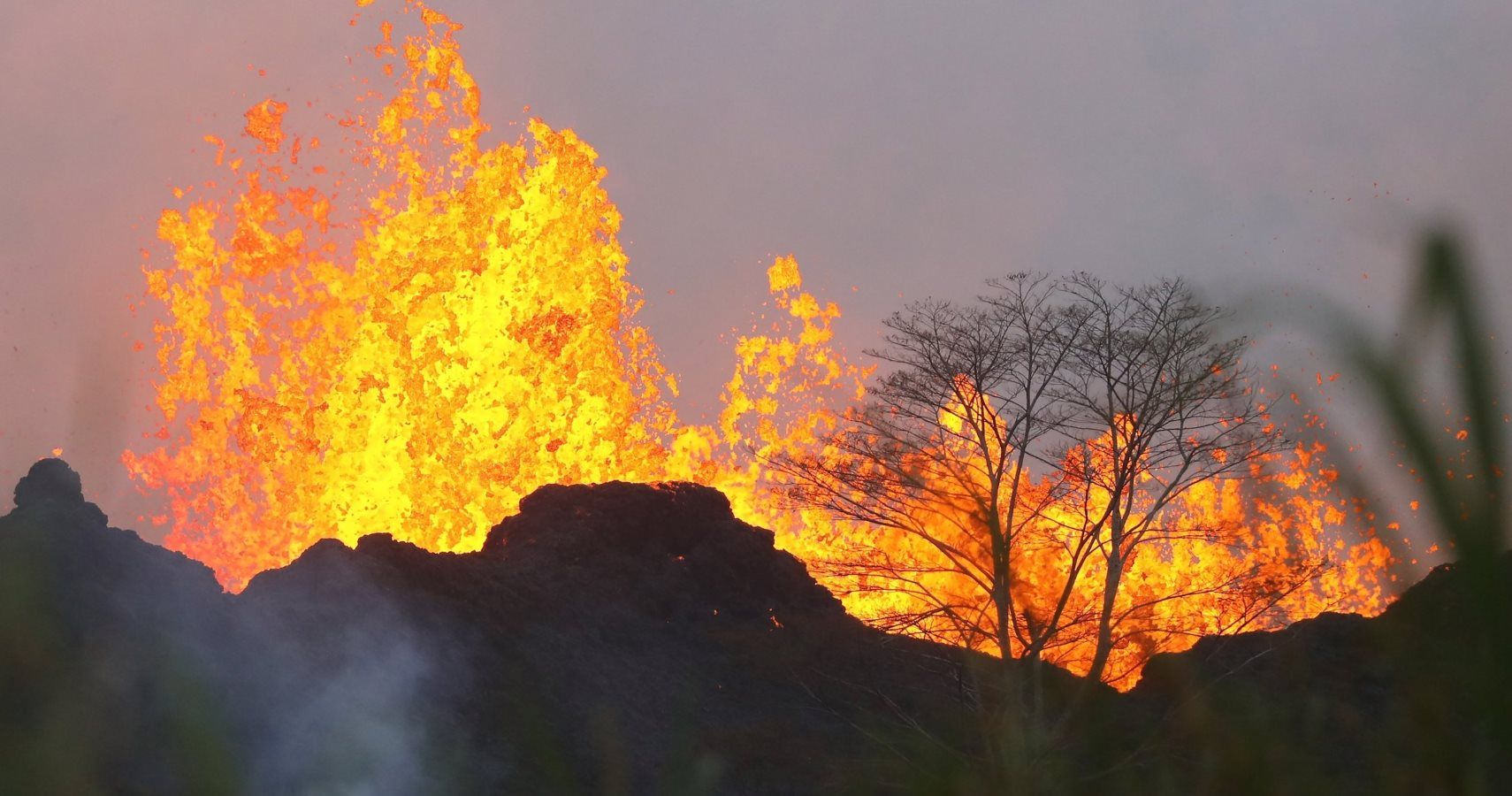Another explosion has rocked Mt. Kilauea, which could possibly mean more eruptions in Southern Hawaii.
Mt. Kilauea has been in almost continuous eruption since 1983, but things took a serious turn back in early May when brand new volcanic fissured opened up along the southern part of the big island of Hawaii. The Leilani Estates and Lanipuna Gardens neighborhoods were both evacuated as lava and toxic gasses burst forth from the new cracks in the earth.
Over 2,000 residents were forced to flee. By June 4, over 100 structures had been completely destroyed by the flowing rivers of molten rock.
And that lava is showing no signs of stopping. If anything it may be getting worse.
A new explosion hit the area of Mt. Kilauea early Tuesday morning, according to the United States Geological Service, which was reported by the Pacific Tsunami Warning Center as 5.5 magnitude earthquake.
No tsunami was reported as part of the earthquake, but quakes have often preceded new eruptions over the past few weeks. The USGS has a “red warning†for the lower Puna area of Hawaii, which means: "major volcanic eruption is imminent, underway, or suspected with hazardous activity both on the ground and in the air."
A flyover by the Hawaiian Volcano Observatory (HVO) later on Tuesday morning (but still early by most people’s standards) saw that the lava flow had filled in much of Vacationland and Kapoho Beach, extending 0.7-miles out into the bay and creating quite a bit of new land.
It’s not land that anyone can actually use, mind you, but given the whole rise if global sea levels it’s something.
RELATED: HAWAII VOLCANO'S LATEST LAVA FLOW CAN BE SEEN FROM SPACE
One fissure in particular, fissure number 8, has been quite active over the past few days with lava fountaining up to 150 feet in the air. The USGS has been keeping tabs on it and also posted a video to their Twitter account that shows the difference in fountain size over the period of June 4th and 5th.
Since the recent geological activity began back in May, Hawaii has endured nearly 10,000 earthquakes as active fissures continue to spew lava that covers the landscape and flows into the sea.
NEXT: USGS SAYS PLEASE DON'T TRY TO ROAST MARSHMALLOWS OVER HAWAIIAN VOLCANO

